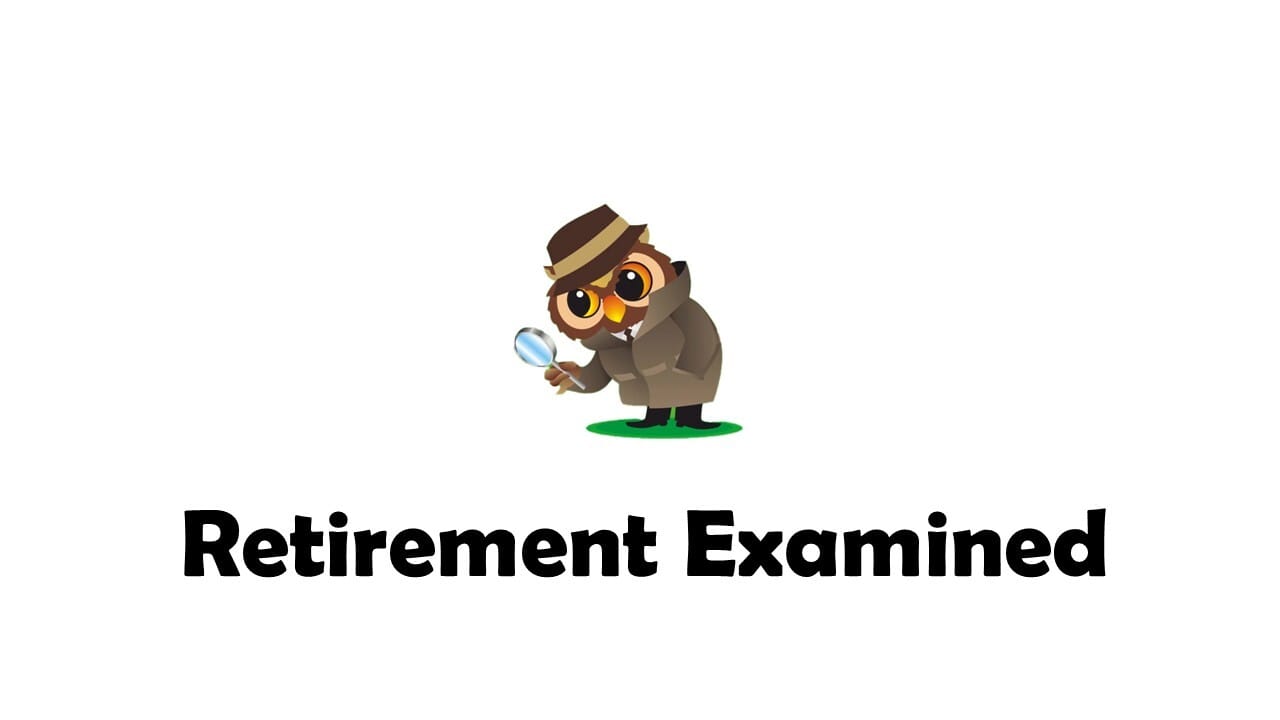- Retirement Examined
- Posts
- Retirement Examined
Retirement Examined
5-Minutes of Breakthrough Secrets: Happy, Fulfilling Retirement

The weekly email that keeps you up to date on exciting Retirement topics in an enjoyable, entertaining way for free.
Ohio's Tax Rebellion: The Homeowner Uprising That Could Reshape American Property Law
by Eric Seyboldt, MBA

Suburban streets and rural roads alike are buzzing with one common message: enough is enough. Families, retirees, and working-class homeowners are rising up against a property tax system they say has become unrecognizable, disconnected from economic reality, blind to local hardship, and structurally broken.
This is no idle discontent. It’s a full-blown revolt, one that threatens to crack the foundation of how local governments across the state fund schools, infrastructure, and basic services. Behind the fury lies a sobering reality: values are up, taxes are up, and still, the local government wants more.
This rebellion is gaining traction, fueled by one unavoidable truth: taxation in Ohio has become unhinged from economic sense.
Unchecked Valuations and Bottomless Appetite
At the heart of the crisis is a runaway reassessment system. Fueled by post-pandemic housing market booms, record-low inventory, and institutional investors inflating prices, assessed home values across Ohio have surged at unprecedented rates—30%, 40%, even 50% in some counties. County auditors, bound by state mandates to tie valuations to recent sales data, have become reluctant messengers.
But here’s the deeper issue: these reassessments are not a reflection of increased income or improved services. They are technical recalibrations based on inflated sales, often driven by out-of-state investors or one-time bidding wars. And yet, every new valuation triggers a tax hike, as if families suddenly came into a windfall. They didn’t. They stayed put. They got older. They earned the same paycheck.
And then came the real betrayal: local governments, school districts, and municipalities didn’t ease back when these massive increases came in. They doubled down.
Bond issues kept coming. New levies kept being introduced. School boards asked for more millage. Libraries, fire departments, and park districts all returned to voters with hands outstretched. In many towns, the tax load has outpaced inflation by orders of magnitude, not because communities are growing, but because spending has become detached from economic gravity.
Homeowners weren’t just watching their taxes increase—they were watching their government ask for more on top of the increase. And that’s when the quiet grumbling turned into open revolt.
The Alternatives: Borrowing Ideas That Actually Work
Now, Ohio residents are turning outward, looking to other states for models that restrain valuation spikes, hold governments accountable, and protect fixed-income residents from being taxed into poverty.
1. Income-Based Tax Caps
In some states, taxes are tied to what people earn, not what an inflated real estate market says their house is worth. This caps taxation at a manageable percentage of household income, ensuring no one loses their home simply because their zip code became trendy.
2. Graduated Property Tax Rates
Rather than a flat rate that punishes modest homes and barely touches the ultra-wealthy, a tiered system scales taxes with property value, shielding the middle class from being taxed like millionaires.
3. Assessment Growth Limits
Capping annual valuation increases—say, at the rate of inflation or a fixed percent—adds predictability to household budgeting and shields residents from volatile markets they have no control over.
4. Hybrid Revenue Models
By reducing dependence on property taxes and diversifying municipal funding through consumption-based taxes, modest statewide pools, or usage-based fees, other states have protected schools and infrastructure without taxing homeowners into oblivion.
A Strategic Blueprint for Ohio
The movement in Ohio is coalescing into a structured plan, designed to both protect taxpayers and preserve services.
Short-Term Action: Expand exemptions, freeze taxes for seniors, and create income-tested credits.
Medium-Term Reform: Cap assessments. Move to a graduated system. Require transparency on how new levies intersect with existing tax burdens.
Long-Term Restructure: Fund schools through a mix of local and state sources. Impose fiscal responsibility on local governments seeking new levies by requiring real needs-based justifications, not just ballot manipulation during low-turnout elections.
The Real Question: When Is Enough, Enough?
Some argue that without new levies, communities will crumble. But the math tells a different story. Valuations are up—massively. Tax revenues are already higher. The shortfall isn’t in funding. It’s in discipline. Governments have been given more, and they’ve demanded more still. Homeowners are not only shouldering the weight—they’re being asked to smile while doing it.
The revolt now underway in Ohio isn’t irrational. It’s rational. It’s data-driven. It’s moral. It says: if property taxes are meant to fund community needs, not crush individual lives, then a ceiling must exist.
The Breaking Point: When Valuation Becomes Extortion
Homeowners have watched their property valuations skyrocket—sometimes by 30% or more in a single reassessment—without any corresponding change in their actual wealth or income. A fixed-income widow sees her modest ranch taxed as if it were a luxury estate. A middle-class couple who bought their home to build generational wealth now wonder if they can afford to stay.
This isn’t a marginal inconvenience. This is a systemic shock. And it's forcing ordinary people to make impossible decisions: keep the house or keep the lights on.
Ohio’s Emerging Plan
The movement is coalescing around a three-phase strategy:
Phase One: Immediate Relief
Expand existing exemptions. Offer tax credits tied to income. Give struggling homeowners breathing room now.Phase Two: Structural Reform
Cap assessment hikes. Shift to a graduated system. Cut out the volatility and return predictability to families.Phase Three: Long-Term Stability
Redesign school funding. Tie local services to diversified revenue streams. Create a system that survives recessions—and respects human dignity.
The Fight Ahead
There are those who argue these reforms are too ambitious. That they’ll wreck local budgets. That they’ll upend the system.
But the truth is, the current system is the wreck. It’s already failing—driving people from their homes, destabilizing neighborhoods, and poisoning trust in local government. What’s radical isn’t change. What’s radical is pretending this can go on much longer.
The revolt isn’t about special treatment. It’s about survival. About fairness. And about restoring a basic truth: a home should be a place of safety, not a tax trap.

Five Financial Holes the Wealthy Avoid—and Why You Should Too
by Eric Seyboldt, MBA
Client: "Eric, I’ve got a steady income, but it feels like I’m always treading water. What are the top things people waste money on that you never see serious investors doing?
Eric: It’s a common concern, and it usually comes down to cash flow behavior, not income level. High earners can stay broke for decades if their money is constantly misallocated. Most people don’t realize how much of their income disappears into non-essential spending that provides short-term convenience at the expense of long-term freedom. Here are five examples that come up often in my practice.
1. Buying New Cars on Credit
Car payments are often treated as a fixed part of adult life. But the truth is, buying new vehicles on financing terms locks you into an asset that loses value every month. Most new cars lose 15–25% of their value in the first year alone. 40% by the second year!
Those who understand capital preservation think differently. They buy used, maintain it well, and avoid tying up large amounts of money in depreciating assets. It's not about driving the cheapest vehicle, it’s about avoiding unnecessary capital loss.
2. Letting Subscriptions Accumulate
Subscription-based services have quietly become a major expense in most households. Whether it’s video platforms, phone apps, or automatic shipments, it’s easy to overlook how quickly these small charges add up.
Wealth-minded individuals routinely review their spending and eliminate anything they don’t actively use or need. They keep their recurring expenses lean so they can allocate capital to more productive uses.
3. Eating Out as a Default
Dining out is one of the most common budget leaks. What feels like a $30 dinner here and there adds up to thousands per year—and much more when delivery and tipping are factored in.
People who build wealth tend to treat eating out as occasional, not habitual. They also understand opportunity cost. Spending $300 a month on restaurants instead of saving or investing it doesn’t just reduce cash flow, it limits future options.
4. Using Consumer Debt for Lifestyle Purchases
There’s a growing trend of using store credit cards, “buy now, pay later” platforms, and promotional interest offers for everyday purchases. These tools often appear harmless but lead to cycles of spending beyond one’s means.
Those serious about financial independence rarely carry consumer debt. If they use leverage, it’s tied to appreciating assets like real estate or business ventures, not consumer goods. The principle is simple: debt should build something, not fund consumption.
5. Spending to Maintain Appearances
A surprising amount of spending is driven by perception—homes upgraded for resale value that never materialize, vacations meant to match peer expectations, or clothing purchases based on trends instead of utility.
The financially disciplined avoid this trap. Their purchases are based on utility and return, not social pressure. They’re more concerned with controlling outcomes than projecting status.
Client: So, how do you balance quality of life with financial growth? Isn’t there room for both?
Eric: There is, but it starts with asking a different question: “Is this helping me build a more autonomous future?” Financial comfort isn’t created by consuming more—it’s created by controlling more. You want your money working harder than you are. And that means treating every recurring cost with scrutiny.
Financial success doesn’t require extreme frugality. But it does require intention. If you avoid these five common leaks, you create margin—room to invest, save, and grow. And over time, that margin is what separates those who simply earn a living from those who build lasting security.
Contact us for a free, brief 10-minute consultation. Let's explore strategies to protect your wealth and make your retirement everything you've dreamed of—secure, fulfilling, and worry-free. Schedule a free 10-minute consultation today by calling 614-943-2265. Your future deserves the best plan, and we're here to help make it happen.
🧼 Ohio’s Most Trusted Name in Power Washing & Window Cleaning
Is your home’s curb appeal fading fast? You’re not alone—and there’s never been a better time to bring it back to life.
Right now, Luke’s Property Services is offering 10% OFF all power washing services—but only for a limited time (end of July)! Whether it’s your driveway, patio, deck, walkway, or siding, they’ll blast away years of grime in a single visit.
🏠 Before and after? Like night and day.
💧 Equipment? Commercial-grade and eco-friendly.
💪 Results? Shockingly clean—and they speak for themselves.
✅ Trusted by homeowners across Central Ohio
✅ Fast, professional, and always reliable
✅ No-pressure, free quotes — just text or call!
📞 Call or Text Luke’s Property Services Today: (614) 531-6979

Fixed annuities can be an essential component of a well-rounded retirement strategy, offering security, predictability, and efficiency in financial planning.
These are current fixed annuity rates and their durations from Top A-rated carriers (subject to change at any time, not FDIC insured):
Rates Are the Highest They’ve Been In Years! Don’t Wait To Lock These Fixed Annuity Rates In Today!
3-year: 5.55% (under $100k Deposited)
3-year: 5.80% (over $100k Deposited)
5-year: 6.20% (under $100k Deposited)
5-year: 6.45% (over $100k Deposited)
7-year: 6.45% (under $100k Deposited)
7-year: 6.70% (over $100k Deposited)
Please feel free to call Eric at 614-943-2265 if you’d like to ask any questions or request information on these fixed annuities or other retirement topics that are on your mind.

“Above All Else, Guard Your Heart, For Everything You Do Flows From It.”
King Solomon

King Solomon
REAL ASSETS, Invest Like the Ultra-Wealthy

www.bourbon.fund
Invest Like the Ultra-Wealthy: Why Smart Money Is Flocking to Real Assets Like Gold—and Even Bourbon
Let’s be blunt: the old playbook for protecting retirement is broken. Inflation is creeping higher. The dollar is losing its punch. Central banks are printing money like it’s Monopoly night. And markets? As unstable as ever.
That’s why the savviest investors aren’t just watching the storm—they’re preparing for it.
They’re moving into real assets—tangible, inflation-resistant investments that don’t vanish when the market sneezes. We’re talking about gold. We’re talking about bourbon barrels. Yes, bourbon. The same elite-class asset quietly making millionaires in private circles.
These aren’t just collector’s items. They’re financial armor—hard assets that hold their ground when stocks crater and paper wealth evaporates.
And it’s not just a hedge—it’s a strategy.
📌 Gold has withstood centuries of financial upheaval.
📌 Bourbon barrels are aging assets with built-in appreciation and rising global demand.
📌 Physical assets provide something no stock ever can: ownership you can see, touch, and trade on your terms.
During market chaos, real assets don’t flinch. They thrive. History proves it. While equities tumble, hard assets often surge—shielding portfolios and delivering asymmetric returns when they're needed most.
And even in calm times? They add powerful diversification. That’s why the ultra-wealthy use them as a cornerstone—not a sideshow—in their wealth strategy.
Ask yourself:
🧠 Are you truly diversified?
🧠 What happens to your retirement if inflation stays elevated?
🧠 If the dollar weakens, what asset in your portfolio gets stronger?
If you don’t have a good answer, it’s time for a new conversation.
Allocating funds into the asset class known as “Real Assets” may be a strategy that you should consider.
Ask us how to Rollover a portion of Your IRA or 401k To A BOURBON IRA (www.bourbon.fund/how-it-works/) or a GOLD IRA (see link below) and:
Safeguard your assets from the collapsing dollar
Incorporate the ‘REAL ASSET’ class into your portfolio like the ultra-wealthy
Hedge against the current high-inflation conditions
Protect your retirement assets against economic crises
Just get in touch. We make it easier than ever.
CONNECT WITH US

Eric Seyboldt, MBA
Feedback or Questions?
You’re invited to get in touch with us if you’d like to find out how the Novus Financial Group can help you on your journey to a happy, fulfilling life in Retirement.
Office: 614-943-2265
Feel Free To Forward Retirement Examined To A Friend and Have Them Subscribe By Clicking The Button Below:
Reach out if you’d like to advertise your business on Retirement Examined or would like to be a sponsor.
Investment advisory services are offered by duly registered individuals on behalf of CreativeOne Wealth, LLC a Registered Investment Adviser.
The content we provide here isn’t financial advice and cannot be taken as such. Please speak to your financial advisor before making any investment decision. Also, note that every investment comes with its risks and drawbacks. Lastly, we would like to remind you that past results cannot guarantee future returns.
This website contains one affiliate link. When you click on the link and make a purchase, we may receive a commission at no additional cost to you. We only promote companies that we have personally used or researched and believe will add value to our readers

